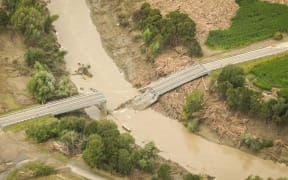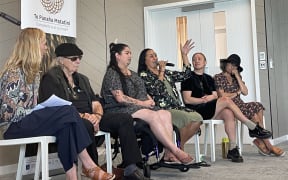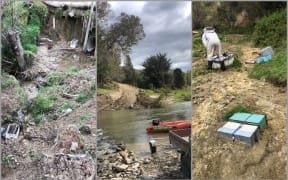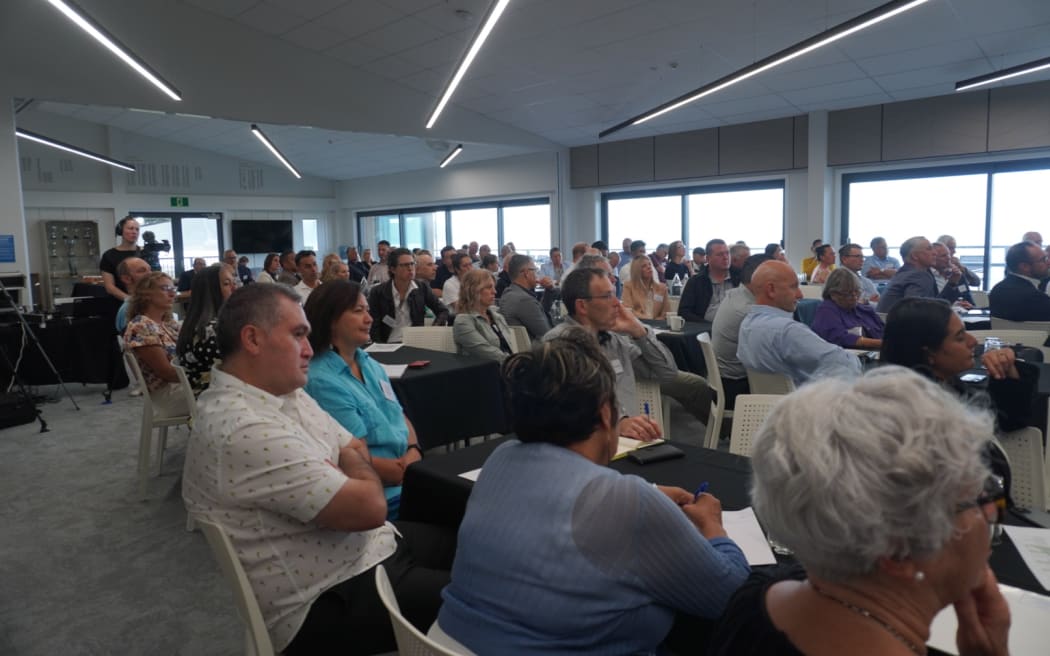
More than 100 people gathered in Gisborne's Awapuni Surf Club to hear gripes about the current state of affairs, and plans for the future. Photo: RNZ / Kate Green
Gisborne leaders are looking beyond storm recovery, and are instead looking towards a future of innovation.
About 100 people gathered in Awapuni on Friday for the Tairāwhiti Tomorrow Together Summit, including iwi, business leaders and government representatives, to share ideas and dream big.
Some speakers shared their successes - Matene Blandford from Rata Forest Management shared how they pivoted to civil work such as roading to ride out the peaks and troughs of the overseas log market last year.
Leigh Potter, co-founder of Mātai Medical Research Institute, told the room about their work on ADHD by studying brain activity, which hinged on young Gisborne talent.
Others shared their misgivings with the current system.
Maraetaha Incorporated chairperson Bella Hawkins explained the region's current water infrastructure was a bit like driving a Morris Minor, when you could be in a Ford Ranger.
"We are asking a system that was built in 1906 to supply a growing community," she said.
And from Leaderbrand, general manager Richard Burke said restoring infrastructure to its previous state wasn't good enough - he was dreaming of thriving, not just surviving.
"We're kind of used to words like resilient, and we're battlers, and we bounce back, and I often wonder what it would be like if the words were we're thriving, we're excited, we're future-focused."
And solid, reliable, well-built infrastructure was one way to get there.
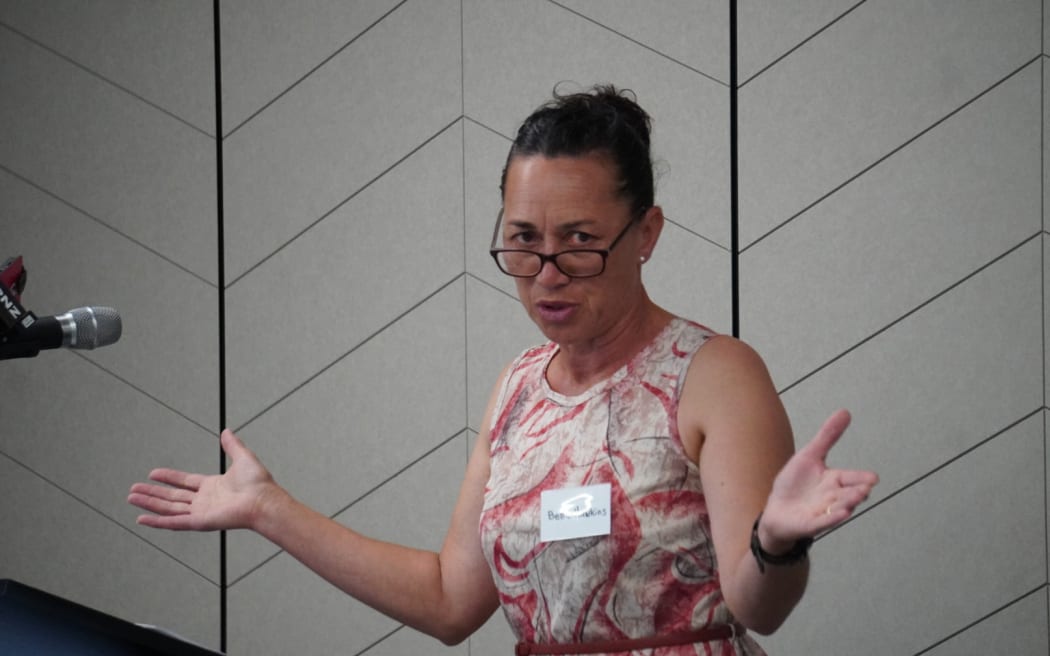
Maraetaha Incorporated chairperson Bella Hawkins. Photo: RNZ / Kate Green
"The reality is that we need to build confidence into our business sector," he said.
There was no use expecting industry to innovate without the security of knowing they would be able to get their goods out of the region during the next big storm.
"But as a region, therefore, it's our responsibility to be clear what infrastructure is required to do that, and then lean on our partners - to lean on central government, to lean on local government. They're all here, they're here for short periods of time. We're here forever."
And from the government, Minister for Emergency Management and Recovery Mark Mitchell, and local MPs Dana Kirkpatrick and Cushla Tangaere-Manuel were in attendance.
Kirkpatrick said the future of Tai Rawhiti had to be about more than fixing roads.
"We know we have to fix the roads and the infrastructure, and we know we need to function better in terms of our social outcomes. But the real question is, what else?" she said.
"What else could we do that grabs an opportunity and turns it into an enduring, value-added development, that changes the dial for the East Coast regional economy?"
Mitchell said the government, and Prime Minister Christopher Luxon, were committed to a locally-led approach.
He said a running joke in Wellington was that Mitchell would like to move the regional recovery unit to Gisborne.
But he acknowledged there was more the government could do, and faster.
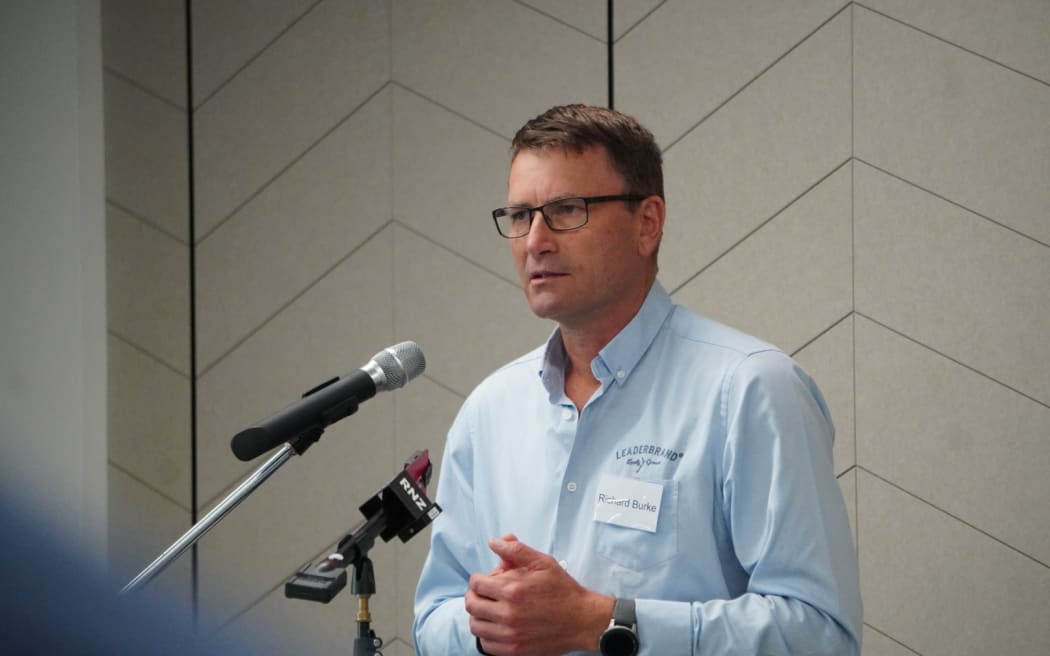
Leaderbrand general manager Richard Burke. Photo: RNZ / Kate Green
The Minister for Regional Development Shane Jones appeared by way of a pre-recorded video.
He said he a share of the new $1.2 billion Regional Infrastructure Fund (RIF), announced in November, would go towards Te Tai Rāwhiti once it was signed off by Cabinet.
The RIF's predecessor, the Provincial Growth Fund, had been instrumental in the success of some of the businesses the room had already heard from, such as Mātia and Leaderbrand.
There was a bit of disappointment that the bulk of the participating ministers could not be there in person. Transport Minister Simeon Brown, Māori Development Minister Tama Potaka, and Forestry Minister Todd McClay, all appeared by way of pre-recorded video speeches.
But Gisborne locals were used to taking the lead in their own affairs. Maraetaha Incorporated's Bella Hawkins said the region was strong, and looking to the future.
"Whether they were here or not, we still have to get on with it," she said. "We all have a part to play, whether it's big or small, it's about our mokopuna moving forward."
Gisborne councillor Rhonda Tibble said it was about giving everyone a seat at the table, and looking for opportunities after disaster.
"We can't stay stuck in what was, we have to rectify what is, and look to see how that can set us up for more prosperous futures."
For Māori, like everybody else in the community, want to be part and parcel of the decision making, so that the decisions aren't made without us... and wrap in our world views about how we believe solutions can be achieved."
And for Māori, their world view spanned far into the past and the future. "We're 62 percent of the Tai Rāwhiti population, we can't be left out of the solutions."
That afternoon, attendees moved into a series of closed-door workshops, with the hopes of sharing expertise and ideas to drive the region forward.

